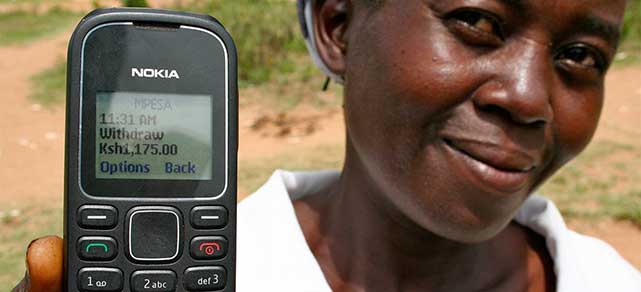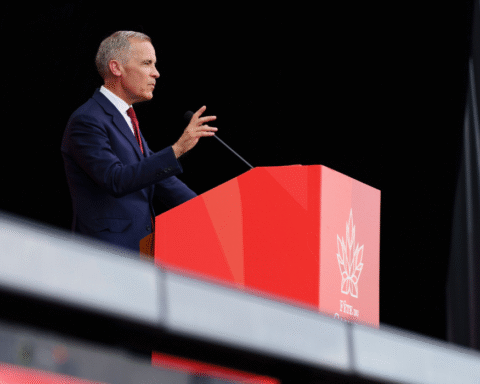This article was originally published on the Nonprofit Chronicles.
You know the proverb: Give a man to fish and you feed him for a day. Teach a man to fish and you feed him for a lifetime.
But what if we’re not very good at giving fishing lessons? What if, instead, we simply give money to poor people, and let them decide how to spend it?
That’s the radically simple idea behind GiveDirectly, a fast-growing nonprofit that sends a one-time payment of about $1,000 to extremely poor people in Kenya and Uganda. Its supporters include Google.org, GiveWell and Facebook billionaires Dustin Moskovitz and Chris Hughes. To learn more, I went to see Paul Niehaus, the 33-year-old president and co-founder of GiveDirectly, at the University of California at San Diego, where he teaches economics.
GiveDirectly, which raised $17.4 million and gave away $6.6 million in FY2014, has grand ambitions, Nieuhaus told me.
GiveDirectly’s first and most important goal is to “end extreme poverty,” Niehaus says. “That’s an achievable goal in our lifetime, which is very exciting.” He estimates that giving $1,000 to every extremely poor person in the world — defined as those making 65 cents a day or less — would cost $65 billion, roughly half of what wealthy governments and NGOs now spend on overseas development aid.
Second, GiveDirectly aims to reshape international giving by establishing a baseline against which other aid efforts can be measured. This is important. Cash transfers have been likened to the “index funds” of international development, in the sense that their results can be compared to the results of more actively-managed, interventionist efforts to alleviate poverty. As Christopher Blattman and Niehaus explained last year in Foreign Policy:
Every year, wealthy countries spend billions of dollars to help the world’s poor, paying for cows, goats, seeds, beans, textbooks, business training, microloans, and much more….Much of this aid undoubtedly works. But even when assistance programs accomplish things, they often do so in a tremendously expensive and inefficient way.

How expensive? Often, that’s hard to say. Just consider last month’s NPR and Pro Publica reporting on the American Red Cross’s work in Haiti, or reporter Amy Maxmen’s determined but futile efforts to track Ebola aid money in Sierra Leone. (To be sure, these programs weren’t designed to alleviate poverty. But they illustrate the opacity of big governments and NGOs.) The bottom line is, cash transfers may deliver more bang for the buck; if true, that’s worth knowing..
Third, GiveDirectly uses rigorous, third-party evaluations to measure its impact and improve its practices. This implicitly, if not explicitly, creates pressures on other nonprofits to do the same. “Rigorous, experimental evaluation of impacts is rare among nonprofits,” GiveDirectly says. Instead of photos of hungry (or happy) children on its website, you will find data, footnotes and studies with references to “Engel curves” and “implied expenditure elasticities.”
“We want to give people a point of reference, to demonstrate what can be done in terms of transparency and measuring impact,” Niehaus told me.
None of this is to suggest that cash transfers to the poor are a panacea. They do little to address such causes of poverty as corrupt or unresponsive governments, inadequate health care or lack of education. And while the strategy of giving away money with no strings attached is simple, the execution is anything but, as Niehaus and his colleagues have learned.
Economists and evidence
GiveDirectly traces its roots back to 2008 when Niehaus, Michael Faye, Rohit Wanchoo, and Jeremy Shapiro, all then grad students in economics at Harvard or MIT, formed a giving circle. Their studies had exposed them to the work of the Poverty Action Lab, aka J-Pal, which is based at MIT, and Innovations for Poverty Action at Yale; both organizations began in the early 2000s, and they work together to evaluate potential solutions to global poverty, typically by using randomized evaluations, the most rigorous evaluation method available.
Just a word about randomized evaluations: They’ve been used in medicine since World War II. They’re used in business (and sometimes called A-B testing) to evaluate new products or ad campaigns. Nonprofits use them to raise money, by testing fundraising emails or letters. But only in the last 15 years or so have they been used to measure the effectiveness of the work nonprofits do, mostly around poverty alleviation.
Cash transfers, it turns out, perform well in randomized evaluations. Niehaus and his grad student friends approached global humanitarian groups to see if they were interested in experimenting with them. They weren’t, for the most part. So in 2010, they went public with GiveDirectly, and Shapiro headed off to Kenya to set up operations on the ground.

Digital technology is key to GiveDirectly. Mobile phones can be used to get cash directly into the hands of the poor, reducing costs and the risks of corruption. (Kenya has the world’s leading cell phone banking service, called M-PESA.) GiveDirectly staff use cell phones when they go door-to-door in remote villages, capturing data and enrolling those people who are eligible for the cash transfers, and they use GPS coordinates, satellite imagery, and crowdsourced labor (from Amazon’s Mechanical Turk) to detect irregularities.
No system is foolproof, of course. Last year GiveDirectly learned about an incident of fraud involving several of its employees in Kenya. “That was a great moment for us,” Niehaus said, when I brought it up. Why? Because GiveDirectly showed it would take public responsibility for its mistakes–again, a rarity in the nonprofit world.
Since the launch of GiveDirectly, exciting new research has emerged on cash transfers. A 2013 study of a government cash transfer program to young people in northern Uganda found that recipients enjoyed a 49 percent boost in their earnings after two years and a 41 percent boost after four.
Meantime, a 2013 study on GiveDirectly’s early efforts in Kenya concluded that “unconditional cash transfers have significant impacts on consumption and psychological well-being.” Households spent more on housing, education and food. Some people replaced their thatched roofs with tin roofs, which need to be replaced less often, saving money over time. Others started small businesses. Spending on alcohol or tobacco did not increase. Interestingly, by measuring levels of the stress hormone cortisol, the researchers found that the gifts of money improved recipients’ psychological well-being. It should be noted that Jeremy Shapiro, a co-founder of GiveDirectly, was a co-author of the study.
Flavor of the month?
GiveDirectly has attracted a lot of favorable press coverage and a bit of backlash, too. Writing in the Stanford Social Innovation Review, Kevin Starr and Laura Hattendorf call GiveDirectly “the current flavor of the month” and challenge the claim (made not by GiveDirectly, but by its fans) that the cash-transfer model is “the best and simplest way to fight poverty.”
No (they wrote). It’s an experiment—an important one, but an experiment nonetheless. We hope we’re wrong, but our hunch is that it is more of a 1-year reprieve from deprivation than a cost-effective, lasting “solution to poverty.”
We’ll see.
My own hunch is that GiveDirectly will continue to grow. (Bill Gross, the billionaire bond king, has said he’s interested in GiveDirectly, although he has yet to contact the group, Niehaus told me.) The idea of giving directly to the poor has particular appeal to people like me who are distrustful of expertise and bureaucracy. Global development is a multi-billion dollar industry — really, there’s no other word for it — that is composed of people who believe that they know what’s best for poor people, and that they can make decisions for them. They may right. But if they are, the onus on them is to prove it.
Philanthropists who are more modest can take pleasure in giving away not only their money but the power to decide how it will be spent. Besides, there’s something almost thrilling about watching GiveDirectly as it continues to experiment, and refine its model. Are women better stewards of the cash than men? Is it better to give a lump-sum payment or spread the donations out over time? What’s the optimal amount of money to give?
“It’s a bit of an adventure,” Neihaus says. “We know from research that good things will happen when we give people cash, but we really have no idea for any particular person what exactly that will be.”
[Disclosure: I donated to GiveDirectly last year, through GiveWell.]







